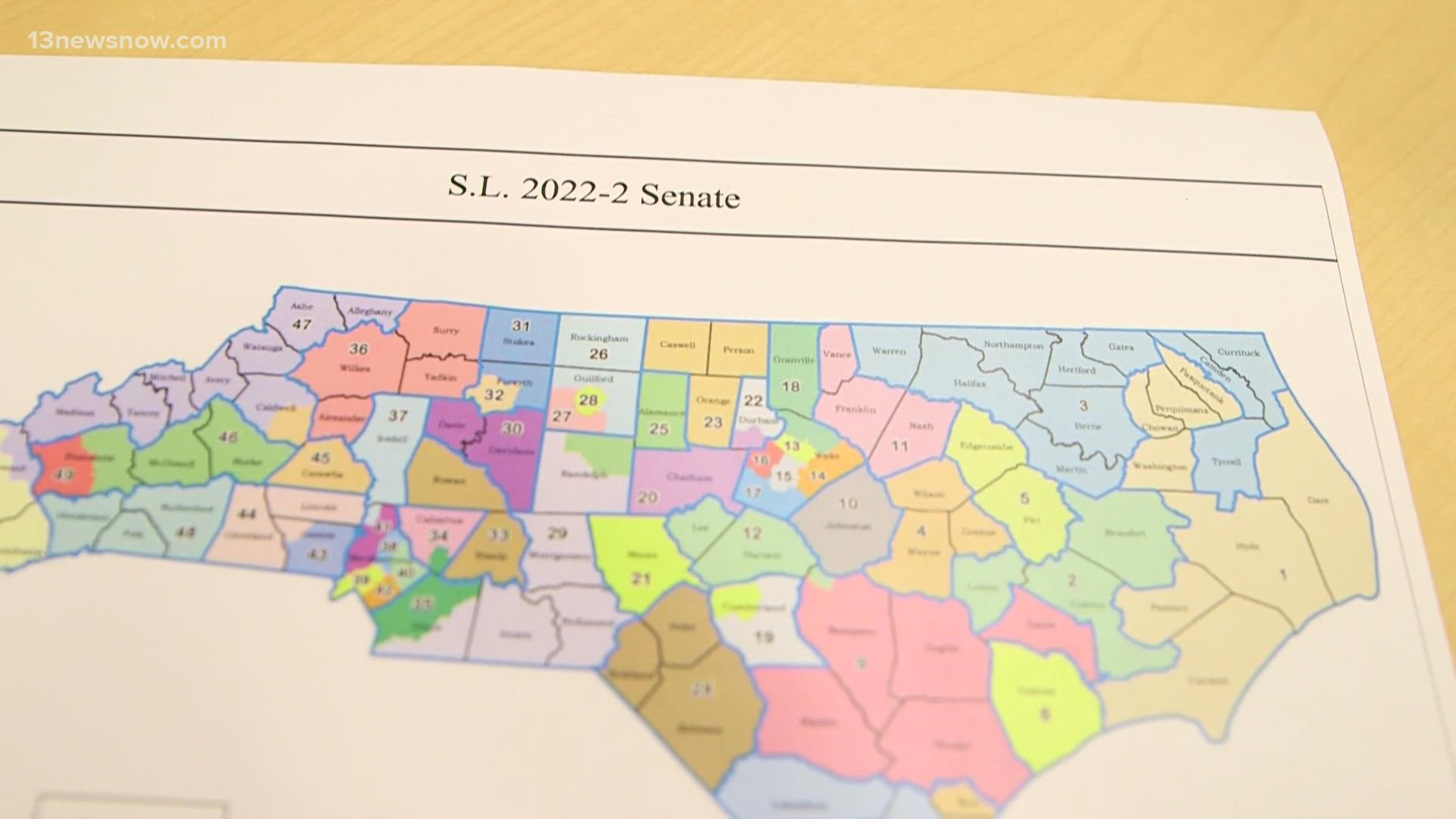RALEIGH, N.C. — A panel of trial judges has made additional changes to North Carolina’s congressional district map.
The three judges ruled Wednesday that the latest U.S. House redistricting performed by the General Assembly fails to meet standards of partisan fairness set recently by the state Supreme Court, so they made some adjustments.
The judges did uphold state House and Senate maps the legislature approved last week.
The newest congressional map splits the Tar Heel state into 14 congressional districts, an increase of one from the previous 13 districts. The belief is that the maps will be more politically balanced and fair in a Republican-leaning state.
Barring a legal stay, candidate filing resumes Thursday morning using the new boundaries for the May 17 primary.
But already, these changes can have an immediate effect at the local level.
“It’s important for us to know: who is representing us, what areas do they cover, what colleges are in their coverage area," said Dr. Jack Bagwell, the president of the College of the Albermarle, a community college with multiple branches serving seven counties in Northeastern North Carolina.
The latest realignment changes the legislative representation for the college's system.
“We have three House representatives in our seven-county service area and one state senator," Dr. Bagwell said. "We'd pick up another Senate representation.”
The new congressional map shifts Pasquotank County away from the state's more coastal counties.
North Carolina Gov. Roy Cooper issued the following statement Wednesday afternoon:
“Today’s decision allows a blatantly unfair and unconstitutional State Senate map that may have been the worst of the bunch. That is bad for North Carolina because it strips voters of their voice in our democracy. Our elections should not go forward until we have fair, constitutional maps.”
The Supreme Court had declared congressional and legislative maps enacted in November were illegal partisan gerrymanders that had to be redrawn.

